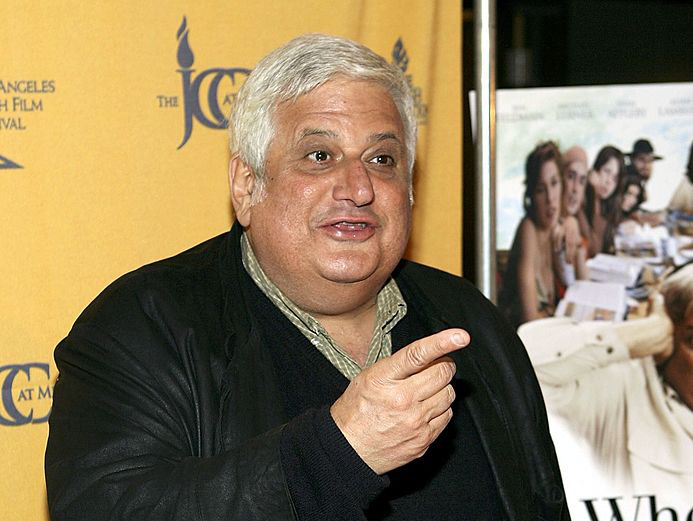Lloyd Blankfein, the chairman and chief executive officer of Goldman Sachs Group Inc, said on Tuesday he had a “highly curable” form of cancer and would be able to work mostly as normal during treatment.
The veteran Wall Street boss, who navigated the U.S. investment bank through the financial crisis, told employees and shareholders he would undergo chemotherapy for lymphoma over the next several months in New York.
The bank's shares slid 2.6 percent to $178.56 after the surprise announcement, which puts Goldman's succession plans under the spotlight, although the market was broadly lower.
While Blankfein, 61, is undergoing treatment, other senior bank officials, including his top deputy, Chief Operating Officer Gary Cohn, will assume some of his responsibilities in dealing with the public, a person familiar with the matter said.
Cohn, who is seen as the most likely successor to Blankfein if he left his post in the near future, replaced his boss at the last minute at a public discussion in New York on Monday night.
The firm has a number of long-serving senior executives, including Vice Chairman Michael Sherwood, investment banking co-head David Solomon, Chief Financial Officer Harvey Schwartz and Chief Strategy Officer Stephen Scherr, who investors said offered stability.
“The culture of the firm transcends one person,” said Mike Donnelly, senior vice president and portfolio manager at CS McKee, which manages $10.5 billion and owns Goldman shares.
“Obviously Blankfein has done a great job and embodies the culture, but in terms of this changing the investment thesis given the valuation, no absolutely not.”
In a statement, Blankfein said he underwent tests after not feeling well in late summer. He did not disclose the type of lymphoma, a cancer that affects the immune system, or how advanced it is.
He received a final diagnosis on Monday around midday, and informed Goldman's board of directors around 4 p.m. EDT (2000 GMT), the source said.
RAGS-TO-RICHES STORY
Blankfein has led what is viewed as the most powerful U.S. investment bank since 2006, and bank executives say he has never hinted at when he might retire or his plans after Goldman.
The New Yorker is credited with helping to keep the firm afloat during the financial crisis with an early decision to rein in exposure to risky mortgage-backed securities and a successful appeal to Warren Buffett to invest in the firm during the chaotic days after Lehman Brothers went bust.
Goldman's role in the U.S. housing bubble and the billions of dollars paid out in bonuses to its top staffers have made the firm a magnet for popular anger about Wall Street. Rolling Stone magazine once referred to the firm as the “vampire squid” of finance.
Blankfein, a former chain-smoking gold trader, has helped improve the bank's public image and make the transition from a pure investment bank to one with a greater exposure to commercial lending.
Blankfein's No. 2, Cohn, has followed a similar career path as his boss. Like Blankfein, Cohn got his start at commodities firm J. Aron & Co, which Goldman then acquired. He has been COO as long as Blankfein has been CEO and is 6 years younger.
Blankfein's life is a classic rags-to-riches story. Born in the South Bronx and raised in a housing project in the East New York neighborhood of Brooklyn, he worked his way through Harvard College and Harvard Law School, helped by financial aid.
Blankfein's disclosure comes a little more than a year after JPMorgan Chase & Co CEO Jamie Dimon said he had throat cancer. Dimon continued to lead the bank during treatment.
Dimon wished his rival a fast recovery on Tuesday.
Lymphoma is cancer that begins in the lymphatic system, which is a part of the immune system that carries away waste and transports white-blood cells that attack disease. It can occur as Hodgkin lymphoma, which has a five-year survival rate of about 86 percent, or non-Hodgkin lymphoma, which has a five-year survival rate of about 70 percent.
Dr. Len Lichtenfeld, an oncologist who is deputy chief medical officer of the American Cancer Society, said chemotherapy is the main treatment for both Hodgkin and non-Hodgkin disease. Individuals in their 60s and 70s are more likely to have the more common and harder-to-treat non-Hodgkin variety of the blood cancer, which affects the body's infection-fighting white blood cells, he said.
Depending on where enlarged lymph nodes are found, and their size, he said doctors may use radiation as well as chemotherapy.
“There are many people who are dealing with cancer every day,” Blankfein said. “I draw on their experiences as I begin my own. I have a lot of energy and I'm anxious to begin the treatment.”





















 More news and opinions than at a Shabbat dinner, right in your inbox.
More news and opinions than at a Shabbat dinner, right in your inbox.